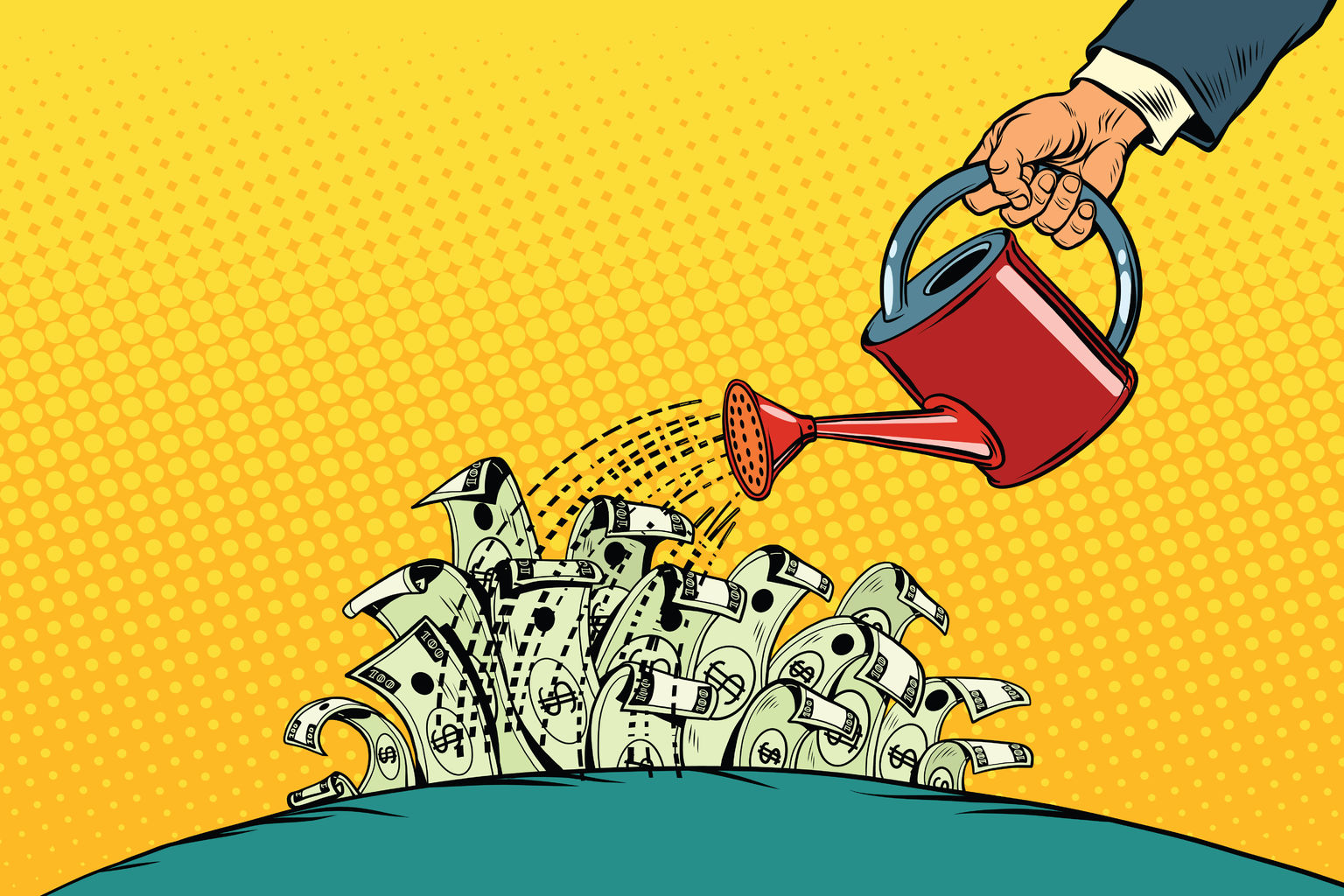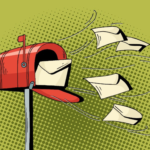I started my working life in customer service, selling women’s shoes. This had two major impacts on my life.
- I have a shoe addiction that appears to be incurable.
- I have always believed that understanding your customer leads to the best possible outcome for both of you.
In my shoes days, my chatty nature allowed for me to get to the heart of most ladies’ shoes desires fairly quickly — and resulted in solid sales for me and happy ladies with new shoes they loved. Over my seven years selling shoes I generated a small following of ladies who returned to me time and again for their shoe-indulging needs. If they came back a second time and sought me out, I knew I would very likely see them again and again and again.
The same goes for donors, if they come back for a second time, they are much more likely to give again than those who have only done it once.
One of my first jobs in fundraising was on the phones with an environmental charity taking inbound donation calls. I was blown away by the passion of the donors, how much they knew about the environment, threatened species, and climate change. I found myself learning as much as possible so I could join and understand their enthusiasm and concern. And I naturally found myself focusing on thanking them for their donations, their time, making the effort to call in, for supporting again for supporting for so long, for supporting for the first time.
I didn’t know that this kind of thanking was not common. And like my shoe days, I ended up with a group of donors I spoke to, or who asked to speak to me, every time they gave. They appreciated my attempts to understand them and what they cared about and my thankful approach. I learnt quickly — because they told me — that lots of other organisations did not thank them in any way. That they weren’t always sure their giving was doing anything.
These basics still hold true, but now I have the evidence beyond my own anecdotal experience to prove it.
Thank and engage with a new donor and they are more likely to give again. And someone who gives for the second time is more likely to give again … the first gift is not a commitment, the second one is closer to an indication of ongoing potential.
So how do we secure a second gift?
I think it’s important we don’t assume a first gift is a commitment.
When we solicit a first gift from a new donor, we rarely suggest it’s any form of commitment. In fact, strong first gift asks focus on a single focused offer (see Jeff’s blog on this: How to Make Fundraising Work: Nail the Offer), and as such the expectation we set with prospective new donors is to receive that gift and show the donor that their giving has achieved what we said it would.
Sean explains this well in his blog: Sorry darling not everyone wants a relationship with you.
“You see, most donors don’t want relationships with you. They gave because they liked the pack/person who signed them up on the street/advert online/Facebook post/friend who did an event. The connection is slight. Casual. Hardly ‘engaged’.”
Here’s my top tip for securing the second gift:
Make sure your first-time donors know they have done something meaningful, that they have had the impact you offered them.
Your thank you acknowledgment for their first gift is your first moment of truth. Your first opportunity to engage and influence a potential second gift. Running at the first-time donor with expression of thanks for the “commitment” they’ve made to your organisation … or worse still, throwing a tonne of information about everything you do and welcoming them on board like they have committed to marriage, is not responding to where the first time giver is.
If you aren’t even sending a thank you or acknowledgment, stop reading here and go address this. It’s the most important thing you will do to improve your donor experience and donor retention.
Effectively thanking donors for the donations, they make is not a cost — it’s a necessity. It’s good manners, it’s common sense, and it will help you take a step towards being donor-centric (See Jeff’s blog 20 Donor-Centric Things You Can Do to Raise More Money — Now and for Years to Come for some chat on what donor-centricity is and other things you can do to be more donor-centric).
I’ll put it out there: the majority of first gift acknowledgments are rubbish.
Why? Because they are generic or purely administrative or not reflective of what the donors did (which was make a gift, in response to some trigger). None of these things make a first-time donor feel like their donation was valued. And even worse, they don’t give an emotional pay back … they don’t show your first-time donor that they have done something important in some specific way.
An administrative or generic acknowledgment ticks the boxes of being organised and they are unlikely to upset anyone … but they certainly don’t provide compelling, emotional support for the outcome of giving.
An over-the-top ‘Welcome to Us’ first gift response is likely just confusing and/or overwhelming. This is just information overload, with lots of organisational information unrelated to them, their donation, the impact of their donation, or their motivation for giving the donation. Lots of rational, factual, and organisationally focused information that I guess we create with the belief we are presenting our credibility. Often these packs ‘educate’ or introduce a first-time donor to everything we do.
‘Welcome to Save the Snails Fiona, you have joined an organisation that is 45 years old, and doing X, Y and Z to save snails and we are so pleased to have you on board.’
And the donor is thinking, Hey wait a minute, I didn’t join anything. What is happening here?
Even if you acknowledge what they gave for, this ‘too much, too soon’ approach can obscure the compelling, emotional support for the outcome of giving.
A really great thank you / acknowledgment should:
- Address the donor personally and correctly.
- Tell her what impactful / life-changing thing she has achieved, personally, by making the donation. Be specific about the impact … this is different from what you are going to spend the money on. Make sure this impactful thing is the impactful thing you solicited the donation for.
- Say thank you … the actual words Thank You. It’s surprising how much effort goes into writing thank you letters that do not say thank you.
- Tell the donor a story or extend the story she responded to. A rescue helicopter charity thanked me for my first donation, made online and unsolicited, by telling me about a young child whose life was recently saved by the rescue helicopter team and thanked me for helping to ensure further missions like that will happen. I was given an emotional reason to feel good about myself for making a donation. I was given a compelling story I could re-tell myself or my family about the impact of my generosity. My giving was treated with the respect it deserved.
Here are a few common first gift acknowledgments to check to make sure they’re working right:
- Website auto response – the response that confirms the donor has made a gift once she makes the final click on the donation form. These are hands-down the most non-personal and uninspiring administrative interactions most charities deliver. If you don’t have control over this part of your web journey, find out who does and engage them to help you. It might cost some money, but it is worth it.
- The donation destination on your website. Do the words Thank You appear at all?
- Inbound call to your office / supporters service team. Are they trained and supported to have the skills and feel they have the time to be delivering really heartfelt thank yous to everyone who makes a donation?
- Inbound call to a phone agency. Have you listened in on their thank yous?
- Response to a direct mail pack. Are you pumping out a generic, two paragraph note on the combined thank you and receipt piece of paper your database produces? At the very least please make those two paragraphs meet the above criteria, and if they can’t, find a way to include an additional thank you letter with the administrative receipt. The cost and operational hassle are worth it.
We can help you explore your Donor Service needs and opportunities through our one-to-one Coaching. To find out more and book a free call visit: www.moceanic.com/coaching-plus/











2 Comments. Leave new
Thank you, Fiona, for sharing your valuable insights from experience.
Two things stood out to me. Firstly, I hadn’t considered the illogic of automatically linking the first donation to an assumption of commitment. Secondly, that our donor page doesn’t include a thank you or any acknowledgment of the gift. It’s something I had noticed, but not pursued. Changes are on the way!
Thank you, again, for giving an important reminder of the basics.
Thanks Joni for your feedback, glad to hear changes are afoot for you.